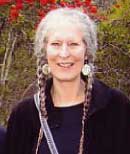(49) a real murder mystery



This blog has been on a long digression between 1519 (ce acatl, marked by the pink castle; see 32 and 33 in the May archive and 1 in April) and 1520 (ome tecpatl, marked by the ears and knife) in order to establish a context for the peculiar way in which New World dates were "translated" into images that look like inventions of Hieronymus Bosch. Apart from the glyph and the enigmatic monogram on the knife, in The Garden of Delights/El Jardín de las Delicias the year 1520 is marked mainly by darkness, violence, and confusion.
Controversy over what happened in that year and how to interpret the events still exists. It was announced today that some skeletal remains have been examined and that they show invaders were killed and eaten. Archaeologists have put a positive spin on the story, saying the evidence shows there was "resistance to the conquest… It shows it wasn't all submission. There was a fight." The story will probably also be taken to indicate that people thought the problem of the European invasion could be solved by eating conquistadores and their friends.
An article based on another interview with the same archaeologist was published in La Jornada on August 2.Boiled bones show Aztecs butchered, ate invaders
By Catherine Bremer
CALPULALPAN, Mexico (Reuters) - Skeletons found at an unearthed site in Mexico show Aztecs captured, ritually sacrificed and partially ate several hundred people traveling with invading Spanish forces in 1520.
Skulls and bones from the Tecuaque archaeological site near Mexico City show about 550 victims had their hearts ripped out by Aztec priests in ritual offerings, and were dismembered or had their bones boiled or scraped clean, experts say.
The findings support accounts of Aztecs capturing and killing a caravan of Spanish conquistadors and local men, women and children traveling with them in revenge for the murder of Cacamatzin, king of the Aztec empire's No. 2 city of Texcoco.
Experts say the discovery proves some Aztecs did resist the conquistadors, led by explorer Hernan Cortes, before the Spaniards attacked the Aztec capital, Tenochtitlan, now Mexico City.
History books say many indigenous Mexicans welcomed the white-skinned horsemen in the belief they were returning gods but turned against the Spaniards once they tried to take over the Aztec seat of power in a conflict that ended in 1521.
"This is the first place that has so much evidence there was resistance to the conquest," said archaeologist Enrique Martinez, director of the dig at Calpulalpan in Tlaxcala state, near Texcoco.
"It shows it wasn't all submission. There was a fight."
The caravan was apparently captured because it was made up mostly of the mulatto, mestizo, Maya Indian and Caribbean men and women given to the Spanish as carriers and cooks when they landed in Mexico in 1519, and so was moving slowly. Continued...



0 Comments:
Post a Comment
<< Home